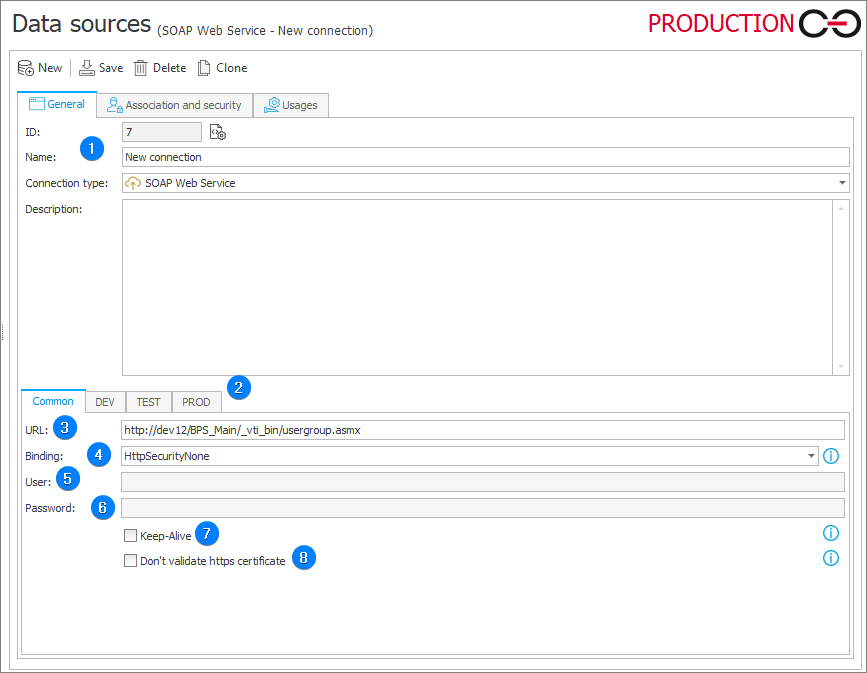SOAP Web Service
The connection allows you to retrieve data from the SOAP Web Service database.

1. Basic connection parameters
- ID – the connection identifier (if the value is smaller than "0", the connection has not been saved in the database yet).
- Name – name of the connection entered by the user.
- Connection type – the field allows you to specify a connection type. The field is filled in automatically.
- Description – description of the connection entered by the user.
2. Environment
Defines the behavior of the connection in particular environments. The Common tab sets the default parameters that are to be used across all three environments (DEV/TEST/PROD). The tabs dedicated to the individual environments can be used to enter custom parameters. In such case, it is necessary to check the Break inheritance checkbox (this will override the settings specified in the Common tab) and then enter the desired connection settings.
3. URL
The address of the SOAP Web Service server. When there are several instances of the SOAP Web Service server, it is necessary to select the server and the instance to which you want to connect.
4. Binding
The parameter specifies the authentication types.
– HttpSecurityNone – no authentication, connection is anonymous, – HttpBasic – connection uses the provided username and password for authentication, – HttpNtlm – integrated login. Connection uses the SharePoint app pool username and password, – HttpsBasic – connection uses the provided username and password and is established via the https protocol. It requires a trusted certificate or disabling the certificate validation.
5. User
A SOAP Web Service user. For the Windows authentication the field is grayed out.
6. Password
A SOAP Web Service user's password. For the Windows authentication the field is grayed out.
7. Keep-Alive
Connection to the web service is upheld periodically. This setting may improve performance if the web service is being referenced multiple times at short intervals, because it will not be necessary to reconnect again every single time. This header must be supported by the web service. If the error "Message=The request was aborted: The request was canceled" occurs, disabling this header is recommended.
8. Don't validate https certificate
When a web service is hosted through the HTTPS protocol, it should have a valid certificate
- Certificate is trusted – the action checks the validity of the certificate in the certificate center;
- Certificate is issued locally – if the certificate had NOT been added to the trusted certificates on the server (unless the option to ignore validation is enabled), the action will consider the certificate invalid.
Ignoring certificate validation is not recommended.
Possible error message:
"Could not establish trust relationship for the SSL/TLS secure channel. ---> System.Security.Authentication.AuthenticationException: The remote certificate is invalid according to the validation procedure."
To learn more about connecting to web services through the HTTPS protocol, read the ARTICLE available in the WEBCON Developer website.